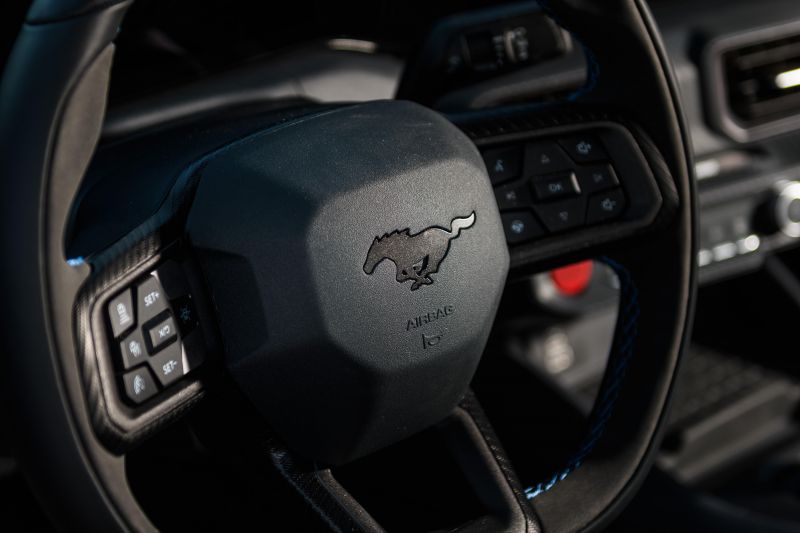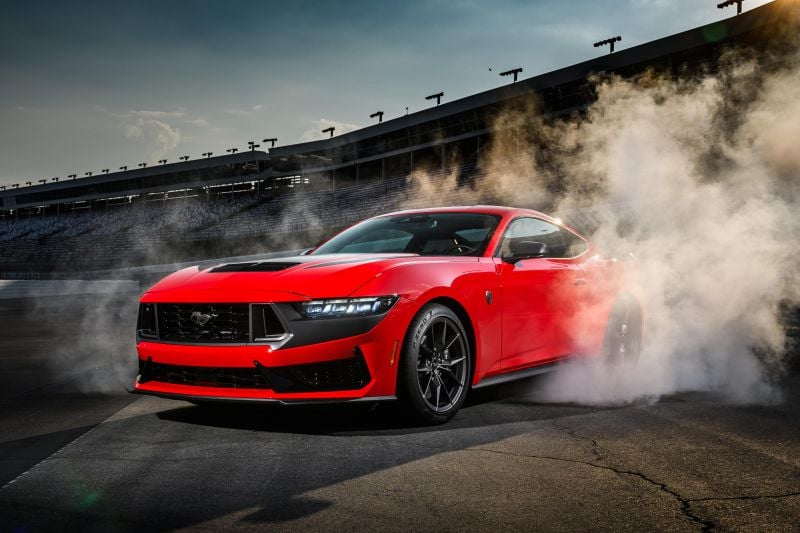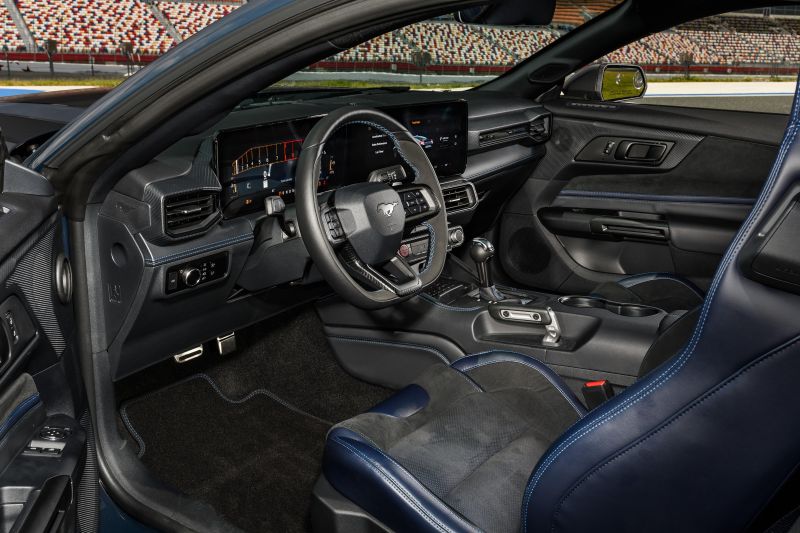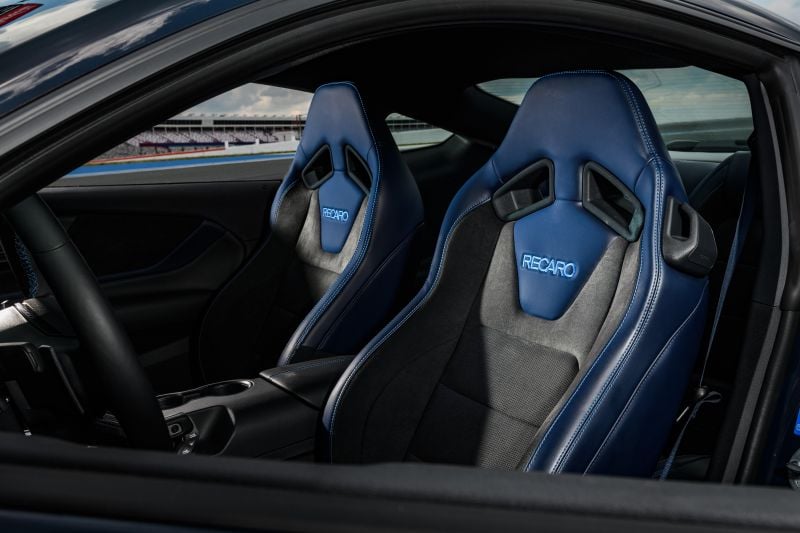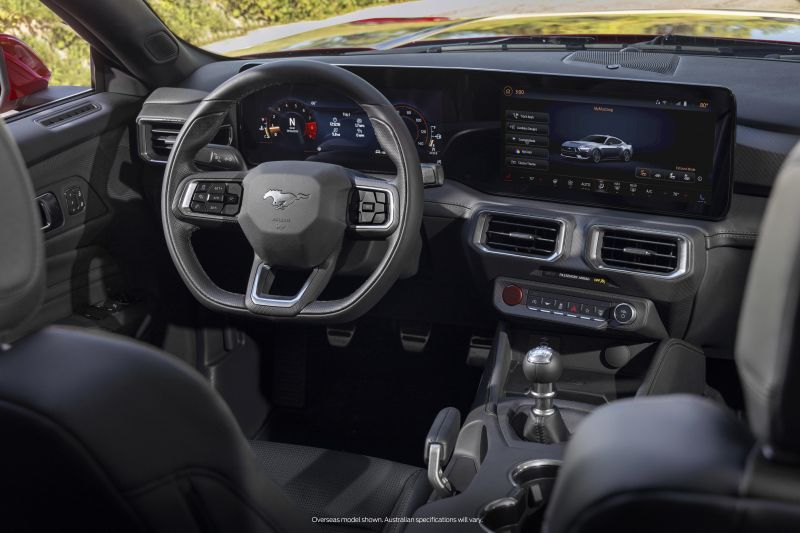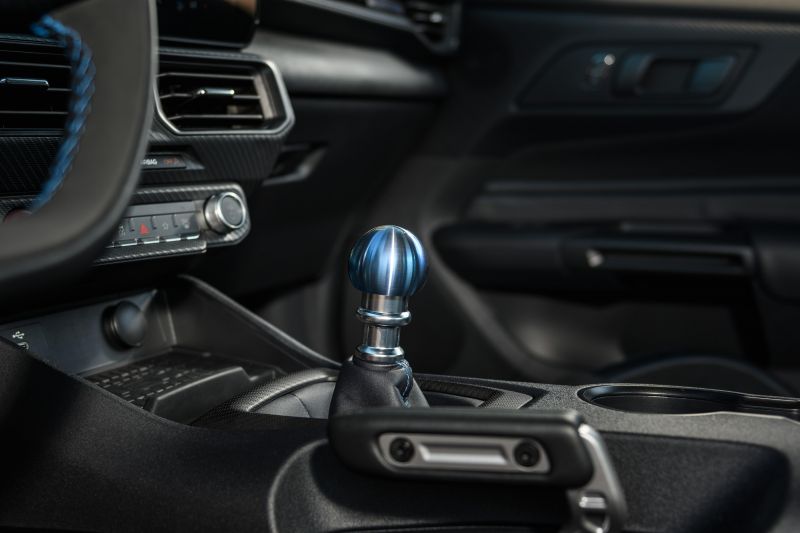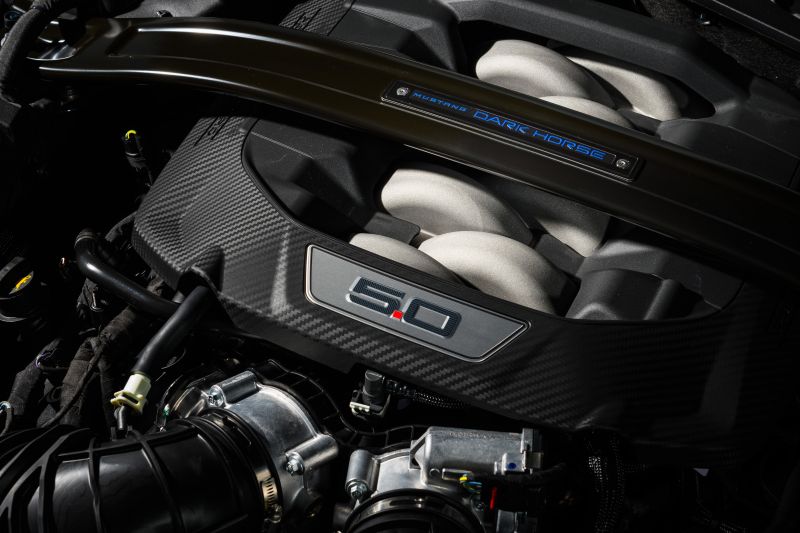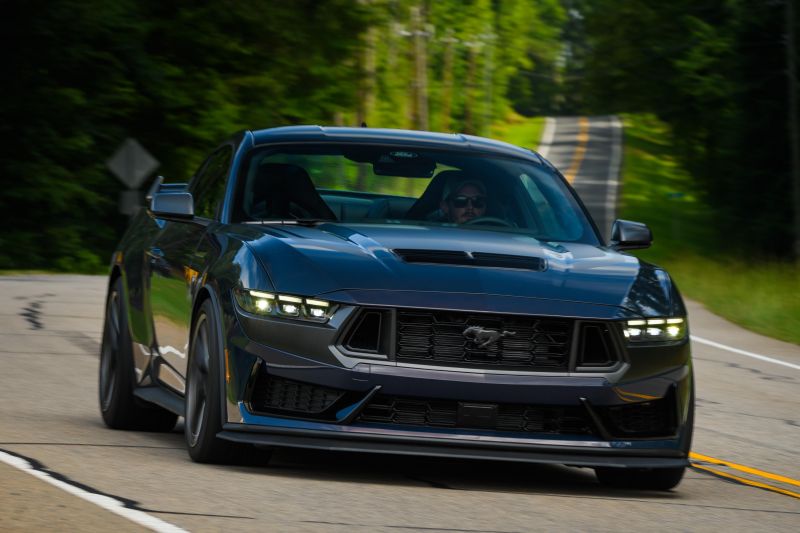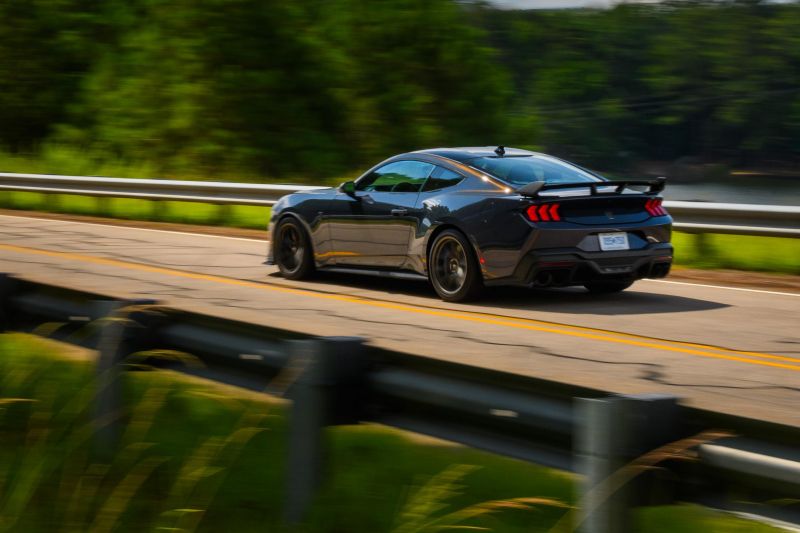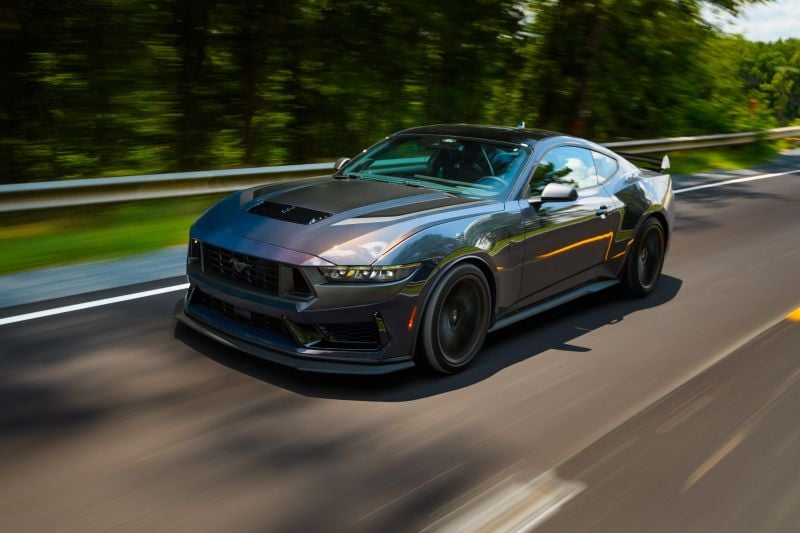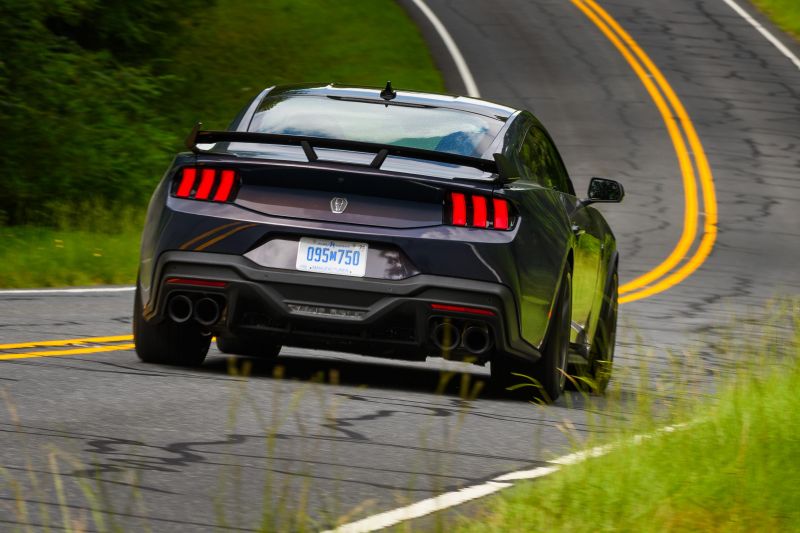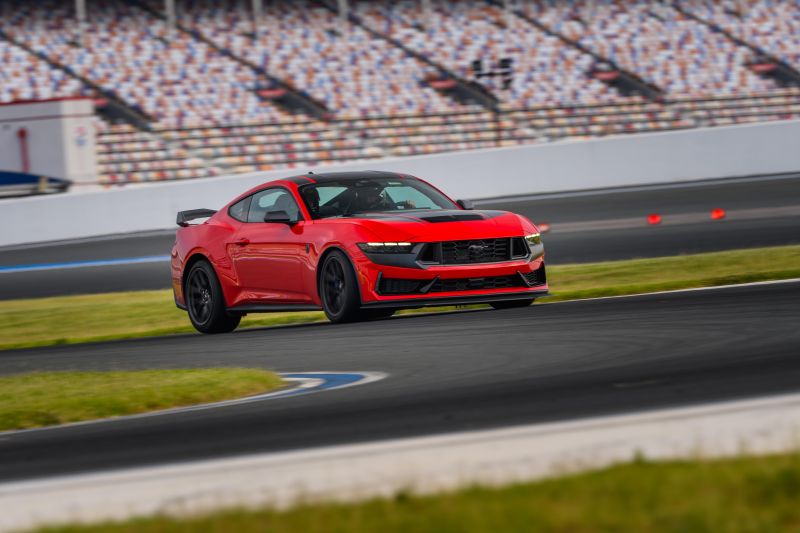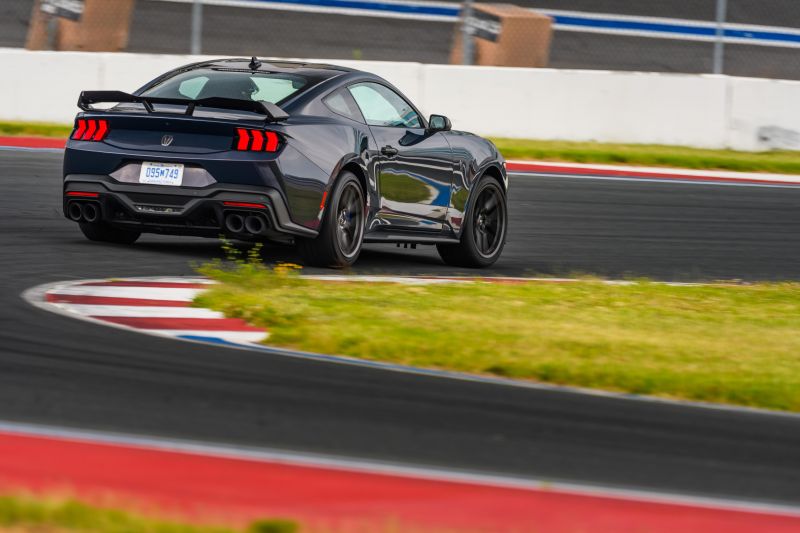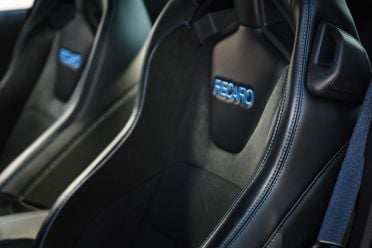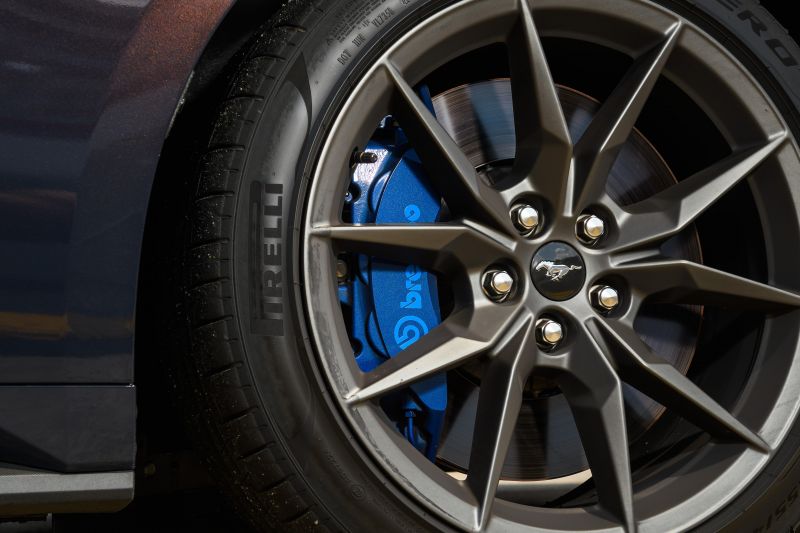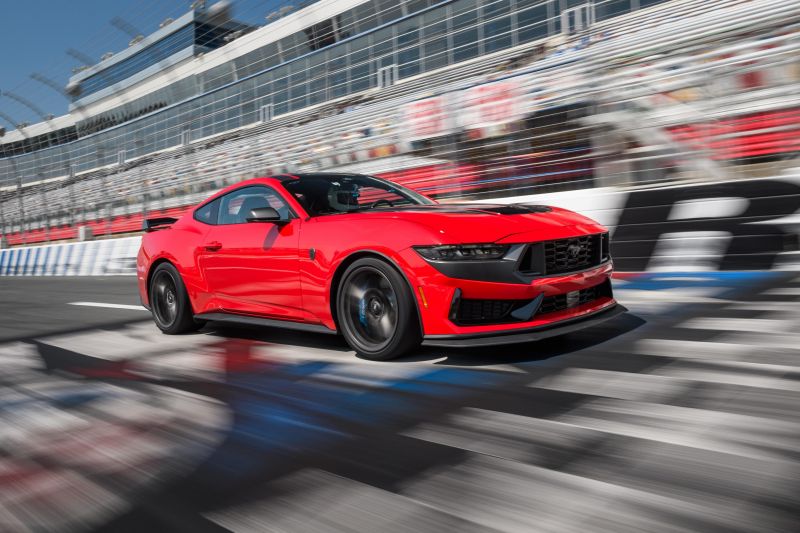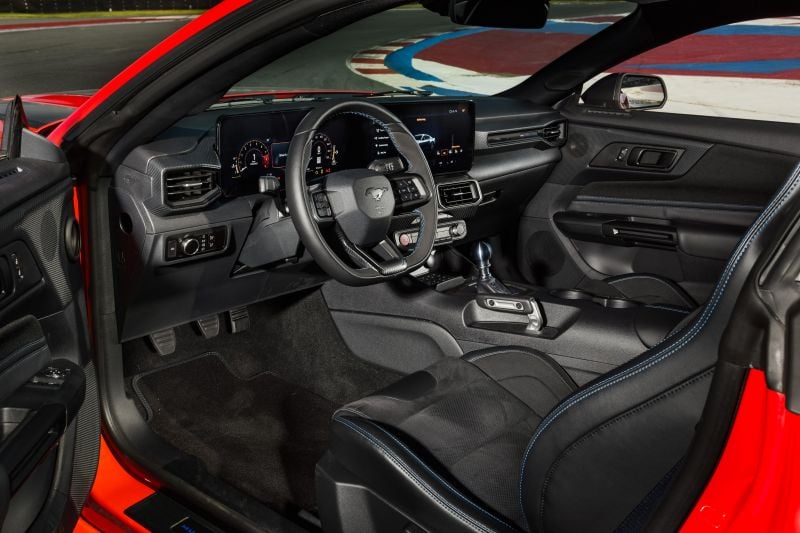The Ford Mustang is a resilient beast.
It’s survived fuel crises, the malaise era, multiple financial crashes and, more recently, a global push to euthanise gas guzzling, peace disturbing internal-combustion cars in favour of whisper quiet electric cars.
Chevrolet is killing the Camaro, Dodge is calling time on the Challenger and Charger, and the likes of Pontiac and Buick… well, the less said about them the better.
Ford just keeps on keeping on, though. Now into its seventh generation, the Mustang is still powered by a good old-fashioned V8 engine (we’ll give the EcoBoost as much time as most buyers do in this review), and still offers the option of three pedals and a stick to properly take charge.
That’s not to say the latest Mustang is stuck in the past.
It’s crisper to look at on the outside, and the interior has been thoroughly overhauled with a dual-screen display that’s more Stuttgart than Alabama.
Ford has also fiddled with the mechanical bits to squeeze more power from the engine, and to improve the ride and handling from the last car; this is a heavy overhaul of the previous Mustang rather than a ground-up new model.
Sitting atop the range is the 2024 Ford Mustang Dark Horse, a more driver-focused pony with more power, a stiffer suspension setup, and a unique gearbox relative to the Mustang GT.
We headed to North Carolina to find out how it stacks up.
How much does the Ford Mustang Dark Horse cost?
We don’t know yet. At the moment, we’re expecting the price to rise across the range relative to the previous Mustang.
The High Performance (EcoBoost) previously kicked off at $52,950 before on-road costs, and the Mach 1 topped out at $83,365 before on-road costs.
We’re banking on the latest High Performance kicking off around the $60,000 mark, with the Dark Horse topping out somewhere between $90,000 and $100,000 before on-road costs.
Rivals for the Mustang are… well, they’re non-existent at this point. Chevrolet is in the process of killing the Camaro globally, the Chevrolet Corvette operates in a very different space, and the Chrysler 300 no longer exists in Australia.
Globally, the Dodge Challenger and Charger are on the way out as well. Ford really does have this space to itself in Australia, and globally things are headed that way as well.
What is the Ford Mustang Dark Horse like on the inside?
The last Mustang tugged hard on the heart strings with its retro-inspired cabin, but it fell short on the quality front. That’s probably putting it lightly; it was cheap and nasty in there.
The new one represents a big step forward.
No, it’s not a Mercedes-Benz S-Class in there, but the shift to a widescreen infotainment setup and a more modern interior layout has paid dividends. The new Mustang looks and feels like a quality item in a way the last one never did.
It’s still very accomodating by the standards of two-door coupes, too. Where a Nissan Z doesn’t have the headroom or legroom for six-footers to get comfortable, the Mustang has space for long-legged drivers to stretch on long journeys, or to fit with a helmet on.
Although the standard comfort seats are more accomodating, even the optional Recaro bucket seats are broad enough for big Australian drivers to get comfortable. We like to make fun of American cars, but cars designed for American people also work for Australians.
A bit more support from those Recaro seats would come in handy on the track, but the trade-off is easier day-to-day driving. That’s a trade-off we’d wager most owners will be willing to make.
The ergonomics are good. The flat-bottom steering wheel is smaller than before and feels great in your hands, and the titanium gear knob on the manual looks and feels expensive. You still get cupholders on the transmission tunnel, and bottles in there still get in the way if you’re trying to shift the manual.
USB-A and USB-C ports feature, and there’s a wireless phone charger at the base of the dashboard.
The infotainment system is a huge step forward from before. The central screen is running a version of Ford’s latest Sync software, and feels properly modern. The graphics are flashy, it responds quickly to inputs, and it has plenty of performance pages to play with.
Wireless Apple CarPlay and Android Auto feature. Gone are the physical climate control dials, replaced with touch buttons at the base of the display. They’re not as easy to use as old-fashioned buttons, but you don’t need too many swipes or prods to adjust the fan speed for example.
Also gone are the plastic-chrome toggles at the base of the dashboard from the old car, replaced with a pod of shortcuts that feel a little bit cheap. They’re an improvement, but they’re still not quite up to scratch.
The digital dashboard is excellent, with a range of layouts based on your drive mode. The optional Fox Body gauges are a neat touch, although it’s a shame you can’t couple them with a digital speedometer.
Rear seat space is… the same as before, which is to say very tight.
You’ll need to be flexible or very small to get back there, and once they’re back there the sloping roofline and short seat base make it a pretty uncomfortable place to spend time. There are no air vents, no USB ports, and no cupholders.
Claimed boot space is 375 litres, which is massive for a two-door coupe. You’ll get a proper suitcase in there, or a set of golf clubs.
What’s under the bonnet?
Power in the Mustang Dark Horse comes from a 5.0-litre naturally aspirated V8, hooked up to the rear wheels with the choice of six-speed manual and 10-speed automatic transmission.
The V8 engine – Coyote, in Ford speak – pumps out 373kW of power and 567Nm of torque, up from 358kW in the regular Mustang GT. A variable exhaust is standard, allowing you to toggle from Quiet Mode (which isn’t all that quiet) to Track Mode (which is flat out obnoxious).
There’s more engine, transmission, and differential cooling in the Dark Horse compared to the Mustang GT; touches debuted on the previous Mach 1 in a bid to stop cars getting too hot on the track, heading into limp home mode, and sending owners home disappointed.
There’s more to the manual than meets the eye. Rather than the Getrag MT-82 unit in the regular GT, the Dark Horse gets a Tremec TR-3160 designed to better handle the rigours of track use.
It also gets a No Lift Shift feature, which allows you to dip the clutch and slam home the next gear without lifting off the throttle above 5000rpm at 90 per cent throttle or above, and rev matching allowing clumsy drivers to avoid the embarrassment of a botched heel-toe.
The 10-speed automatic is a development of the transmission debuted on the last Mustang. Claimed fuel economy hasn’t been locked in for Australia.
How does the Ford Mustang Dark Horse drive?
Prod the start button and the Mustang explodes to life with a bassy flourish that immediately outs it as a good old-fashioned V8.
The sixth-generation car was too quiet at launch, before Ford fixed the problem with a variable exhaust. The Blue Oval hasn’t made the same mistake this time around.
With relatively slow steering, a heavy throttle, and a shifter that takes a firm hand to slot into gear, the Mustang still feels a bit old-school – which it is, no matter how modern the interior. It’s well behaved, though.
There’s so much torque from the Coyote V8 that you can lope around a gear or two higher than you’d usually need to in the manual, and the 10-speed automatic has so many gears you’re never far from a solid shove in the back when you put your foot down.
On the road, the regular Dark Horse is a pretty relaxed cruiser. It feels tauter than the previous GT on the open road, but not by all that much. That means it does a nice job filtering out potholes and expansion joints, and doesn’t shake you relentlessly on North Carolina highways; whether or not that’ll carry over to Australia remains to be seen.
The last Mustang was a lovely grand tourer, and this one appears no different. It’s the perfect car to swallow two bags and take you somewhere scenic over a long weekend, which – anecdotally at least – is how a lot of owners use their cars in Australia.
The only caveat is the handling pack, which won’t be coming to Australia at launch anyway.
Where the regular Dark Horse has a suspension setup that’s slightly more aggressive than the regular GT and wider 250mm front/275mm rear tyres, the Handling Pack has had its stiffness cranked up again and rides on 305/315mm wide Pirelli Trofeo RS semi slick tyres.
Even though it’s more than capable of long stints on the road, but its front end is keener to follow cambers in the road, and it thumps harder over bumps.
Regardless of spec, the Coyote V8 engine is a masterpiece. In a world dominated by turbocharged, small-displacement engines bursting with low-end torque but strangled for character, the way its builds from burbling around low in the rev range, roaring through its mid-range, and snarling to the 7400rpm redline is immensely satisfying.
It sounds angry in Normal mode, with a brassy snarl that feels a step closer to the demonic wail of the flat-plane crank V8 in the Shelby GT350 than was previously the case, and in Track it struts around shouting at the top of its lungs.
Mated with the six-speed manual transmission, it’s a beautifully effortless and old-school . You can leave it in second or even third gear around town without too much stress, but the beautifully weighted clutch, Honda-esque titanium shift knob, and chunky shift action mean you’ll want to work through the gears regardless.
The six-speed transmission in the old Mustang wasn’t bad, but the Tremec in the new Dark Horse is better again.
Its electric assists are also brilliant, and make it easier than ever to extract the best from the three-pedal ‘Stang.
No Lift Shift allows you to keep the throttle pinned on upshifts (provided you’re above 5000rpm, with more than 90 per cent throttle), making it easy to rip from first to second gear at full noise, and the rev match system makes it easy to rip down the gears and give pedestrians or other cars a little blast of V8 thunder as you come to a stop.
Also improved is the 10-speed automatic transmission… but that doesn’t mean it’s the one you should have.
Yes, it’s faster and more efficient. And yes, it’s more decisive than the 10-speeder in the last Mustang. But you just don’t need 10 gears in a car with as much torque as the Mustang, and there’s still a tendency for the gearbox to try every single gear, just for a moment, on its way to the right one.
Put your foot down and, rather than a satisfying surge from low in the rev range, you get a slightly stilted downshift, or two, or three, as the car’s electronic brain takes a guess at how much performance you want. Using the paddles is one way around it, but you’d have to be a lot smarter than me to track what gear you’re in while flicking from eighth or ninth down to second under braking.
That’s also the case on the track. We put the Dark Horse through its paces on the Charlotte Motor Speedway in, you guessed it: Charlotte, North Carolina, on a hybrid oval and road course.
Ford has done track-focused Mustang specials in the past, and no doubt will do them again in the future. Despite that, the badge isn’t really associated with track day warriors. The regular Dark Horse isn’t going to necessarily change that, although it’s a lot of fun to punt hard.
It’s approachable, with solid front-end grip and plenty of traction at the rear making it easy to let loose all 500 raging horses, and the rev match and No Lift Shift systems are a godsend if you’re trying to upshift at 170km/h, using the wrong hand in a left-hand drive car on a banked speedway track – or trying to stop from 210km/h with the walls closing in.
There’s still a sense this is a heavy car, but the brakes are more than up to the task of hauling it up from high speeds. Our test cars were pounded in humid, 35-degree weather by unsympathetic journalists all day and didn’t miss a beat.
If you do want to hassle more expensive metal on track days, the Handling Pack is worth a look. It feels like a different car, with significantly more grip from its sticky Pirelli P Zero Trofeo RS rubber and better body control again than the Dark Horse.
It can be thrown into corners more confidently, and puts its power down better again on a hot track. On a frosty morning at Winton or Eastern Creek? You’d want to really make sure they’re hot, and if there’s standing water around then you’d best forget it.
What do you get?
Final specifications for the Dark Horse haven’t been locked in for Australia, but we know the Recaro seats and Appearance Package (detailed below) will be optional.
We also know the Handling Package won’t be offered here from the factory, although Herrod Performance has already confirmed it will offer it for existing owners.
In the US, Mustang Dark Horse highlights include:
- 19-inch wheels with Michelin Pilot Sport 4S tyres
- MagneRide adaptive dampers
- Active valve exhaust
- Dual-zone climate control
- Heated seats and steering wheel
- B&O sound system
- LED headlights and daytime running lights
- Wireless phone charger, USB-A and USB-C ports
- 13.2-inch touchscreen infotainment system
- 12.3-inch digital driver display
- Wireless Apple CarPlay, Android Auto
- Factory satellite navigation
- Titanium shift knob (6MT)
- Paddle shifters (10AT)
- Flat-bottom steering wheel
The optional Appearance Package includes:
- Black roof
- Notorious Blue finish for brake calipers
- Unique bonnet graphic
Is the Ford Mustang Dark Horse safe?
Ford wouldn’t be drawn on whether it expects the new Mustang to improve on the last model’s disappointing safety.
The outgoing model had a two-star safety rating from ANCAP, and the new model is a development of the same chassis – albeit with some meaningful changes, rather than a stylistic nip-and-tuck.
Standard safety equipment in the US includes:
- Autonomous emergency braking (AEB)
- Lane departure warning
- Lane keeping assist
- Blind-spot monitor
- Rear cross-traffic alert
- Auto headlights
- Auto high-beam
How much does the Ford Mustang Dark Horse cost to run?
The new Mustang will be backed by a five-year, unlimited-kilometre warranty in Australia.
Service pricing hasn’t been locked in, but the previous model offered the first four services capped at $299 a pop, with intervals of 12 months or 15,000 kilometres – whichever comes first.
CarExpert’s Take on the Ford Mustang Dark Horse
Everything you need to know about the Mustang is summed up by the young Dodge Charger driver, who pulled into a rural Virginia service station as we were refuelling the Dark Horse.
He watched it from a distance, and then drove around and started asking questions, told us it was “clean as heck”, and then very politely asked to film a startup and rev.
Some muscle car owners are religious about brands, but he confessed he’d happily own a Mustang because “it sounds cool as heck!”.
Everywhere we went in the Dark Horse, someone wanted a look; from existing Mustang owners, to muscle car fans, to people who just wanted to know more about the low-slung beast burbling through their town.
It’s been 58 years and seven generations since the Mustang debuted, but it still speaks to people like few other cars.
The latest is more than just a show pony, too. It’s been refined in a number of key areas, from the interior technology and finish (mostly) to the way it stands up to abuse on track.
Yes, you’re going to pay more for it – especially in Dark Horse guise – but it’s become a more complete car than before without selling its soul.
I’ll take mine with a manual, thanks.
Click the images for the full gallery
MORE: Everything Ford Mustang

